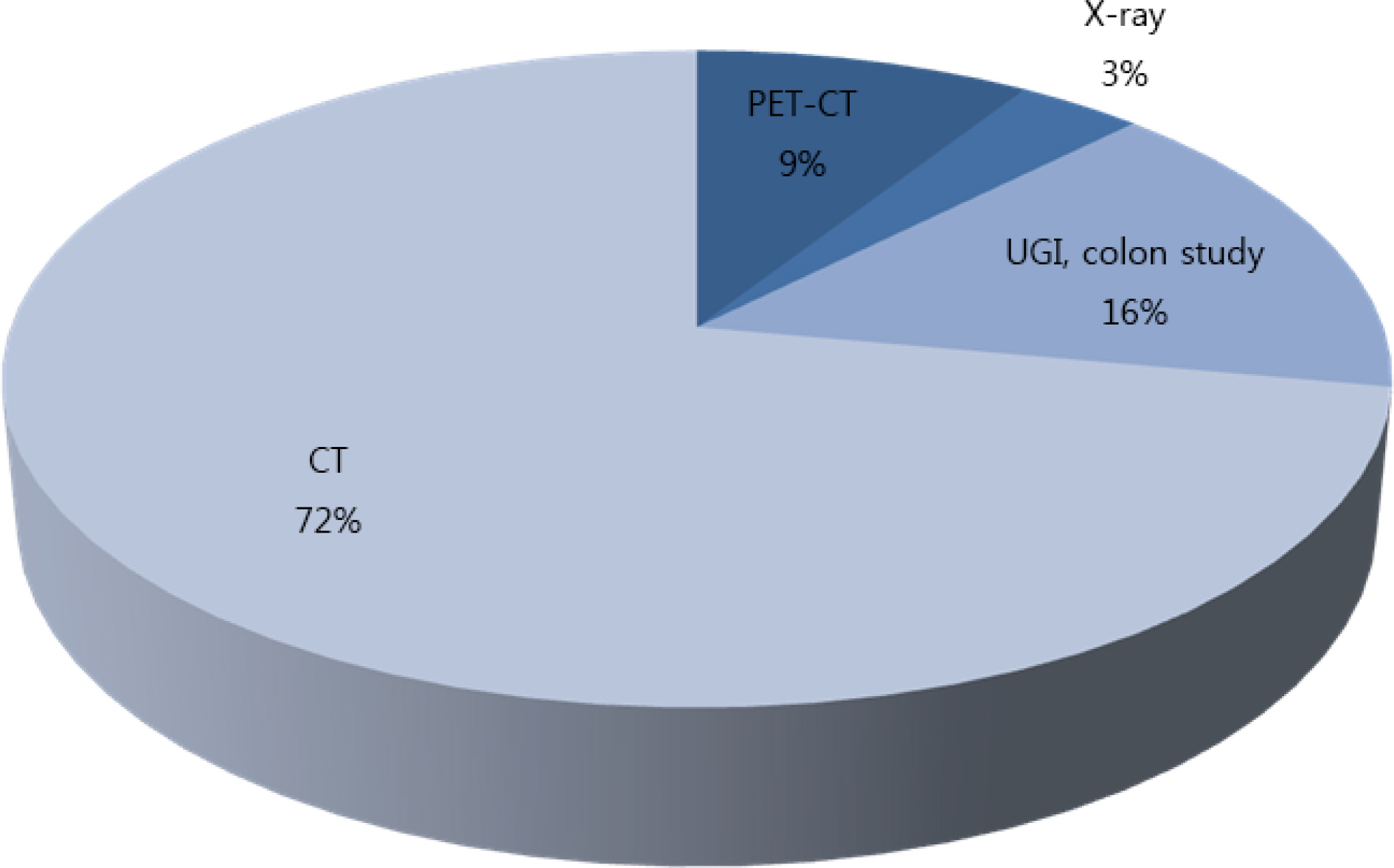Korean J Health Promot.
2015 Sep;15(3):136-140. 10.15384/kjhp.2015.15.3.136.
Radiation Exposure through Private Health Examinations in Korea
- Affiliations
-
- 1Department of Family Medicine, Seoul Medical Center, Seoul, Korea. moowija@hanmail.net
- KMID: 2247208
- DOI: http://doi.org/10.15384/kjhp.2015.15.3.136
Abstract
- BACKGROUND
Due to the increase in general health examination centers, health examination programs are becoming more diversified in Korea. Some of the general health examination tests, such as computed tomography, result in substantial levels of radiation exposure. However, the amount of radiation exposure from these examinations has not been studied in Korea. Thus, the aim of this study was to investigate the level of radiation exposure from general health examinations.
METHODS
Through the Korean Hospitals Association website and portal sites, 296 general health examination facilities were included in the study. The information about whether radiation-related tests are included in the health examination program of each facility was collected from their internet website. The radiation exposure dose for each test was obtained from the Database Construction Report by the Korean Institute of Nuclear Safety.
RESULTS
The mean base exposure dose of health examination programs from 296 health facilities was 2.49+/-2.50 mSv. The mean maximum exposure dose was 14.82+/-9.55 mSv (maximum 40.1 mSv). The maximum exposure dose was the highest at university-associated hospitals (21.63+/-7.54 mSv) and lowest at hospitals with < or =30 beds (7.84+/-7.64 mSv). The contribution of computed tomography on the maximum exposure dose was the highest of all examinations (72%).
CONCLUSIONS
This study verified that examinees are exposed to substantial levels of radiation during general health examinations. It is necessary to establish evidence-based screening programs considering radiation exposure during general health examinations.
Keyword
Figure
Reference
-
1.Seo HG. Periodic health examination in its historical perspectives. Uisahak. 1999. 8(1):79–89.2.Jo BR., Ahn EM. Present Status and problems of health screening program in Korea. Health and Welfare Forum. 2013. 48–54.3.Division of Healthcare Policy, Ministry of Health & Welfare. Korea Health Statistics 2011: Korea National Health and Nutrition Examination Survey (KNHANES V-2). Seoul: Ministry of Health & Welfare;2012. [Accessed March 2, 2015].https://knhanes.cdc.go.kr/knhanes/index.do.4.Lee JK., Kwon JW., Jang HG., Jung JH., Kim WR., Park SH, et al. Design and construction of a radiation dose database for Korean population. Korea Institute of Nuclear Safety. 2005.5.Do KH. The health effects of low-dose radiation exposure. J Korean Med Assoc. 2011. 54(12):1253–61.
Article6.Kaiser J. Epidemiology. Radiation dangerous even at lowest doses. Science. 2005. 309(5732):233.7.Korea Occupational Safety and Health Agency. KOSHA GUIDE(H - 62 - 2012). p.7.8.Smith-Bindman R. Is computed tomography safe? N Engl J Med. 2010. 363(1):1–4.
Article9.Wender R., Fontham ET., Barrera E Jr., Colditz GA., Church TR., Ettinger DS, et al. American Cancer Society lung cancer screening guidelines. CA Cancer J Clin. 2013. 63(2):107–17.
Article10.The Korean Academy of Family Medicine. Lifetime health maintenance program for Koreans. 3rd ed.Seoul: The Korean Academy of Family Medicine;2009. p. 41–42.11.Yang HJ., Lee JS., Kim JS., Lee JK. Evaluation of scientific evidence for health screening tests provided by some hospitals in Korea. J Korean Acad Fam Med. 2006. 27(9):723–32.
- Full Text Links
- Actions
-
Cited
- CITED
-
- Close
- Share
- Similar articles
-
- Current status of medical radiation exposure and regulation efforts
- Level of radiation dose in university hospital non-insured private health screening programs in Korea
- Patient Dose Management: Focus on Practical Actions
- Suggestion for Improper Radiologic Examination Using Ionizing Radiation
- The health effects of low-dose radiation exposure


